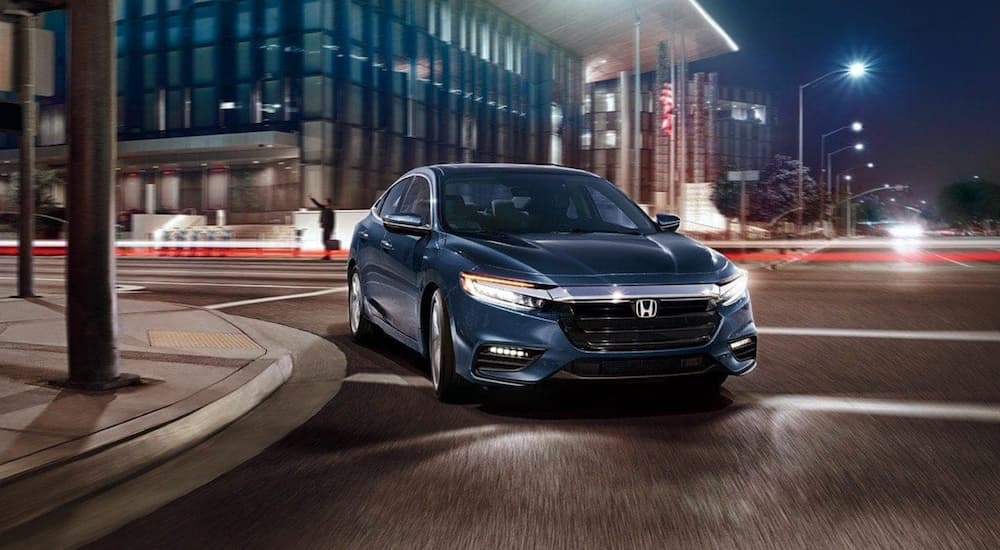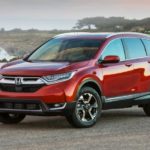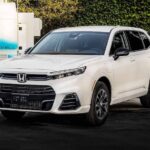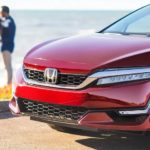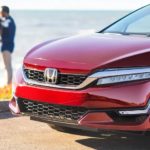When you go to the nearest used Honda dealer, you may see some of their early hybrids and other vehicles available. The market for alternative fuel vehicles continues to soar with no end in sight. According to Precedence Research, it’s forecast to surpass $1 trillion worldwide by 2032. But while some automakers are scrambling to get their first BEVs, FCEVs, and even PHEVs on the road, Honda has been at the game for a while, beginning work on alternative fuel designs in the late 1980s.
As Honda continues to drive into the future, we thought it would be worth looking at their time in the alternative fuel realm. How did they position themselves as one of the leaders in battery and fuel-cell electric vehicles? Were there any bumps along the way? And are these earlier machines still worth taking for a spin? Let’s explore the history of Honda’s alternative fuel vehicles by looking at its first entry in four subcategories—battery electric, plug-in hybrid, natural gas, and fuel-cell electric—and how these vehicles led to now.
The Honda EV Plus: An Electric Guinea Pig
Many auto manufacturers have followed the path of starting with a plug-in hybrid electric vehicle (PHEV) and then progressing to a battery electric vehicle (BEV). In the case of Honda, though, they jumped straight to all-electric technology. Drawing inspiration from the World Solar Challenge race held the previous year in Australia, Honda began work on an electric vehicle in April 1988. Though they did not have experience with any sort of electric power plant, they recognized the burgeoning importance of alternative fuels and decided to be proactive.
Nine years of research and development led to the Honda EV Plus, which was released in 1997. It featured a design based on the three-door Civic. Notably, this was the first BEV that did not use the traditional lead-acid battery. Instead, it had a nickel-metal hydride (Ni-MH) battery, a newer technology that was less likely to degrade under extreme heat or driving conditions and recharged much faster. Another important addition was the pancake-style motor, which had the necessary output while being small enough to fit in a compact car.
While groundbreaking in many ways, the Honda EV Plus didn’t make a huge impact at the time. Honda only offered them on a three-year lease plan; this length of time was chosen because that’s how long the battery could go before wearing out. It also was only leased in California, where it met regulations concerning zero-emissions vehicles. Approximately 340 vehicles were leased before Honda stopped production in 1999 to prepare for the release of the Honda Insight, their first hybrid electric vehicle. They continued to lease and service the existing EV Plus cars, but each time a lease wasn’t renewed, Honda reclaimed the vehicle and decommissioned it.
The Honda Insight: A Groundbreaking Hybrid
With its release in 1999, the Honda Insight was the first modern hybrid vehicle available in the US market. The Toyota Prius had been available in Japan since 1997 but didn’t come to the US until 2000. This subcompact was a three-door like the EV Plus and used the same Ni-MH battery while debuting the company’s Integrated Motor Assist technology that has become standard in Honda PHEVs. With an EPA-estimated mileage of 61 MPG on the highway, it earned the official title of America’s most fuel-efficient vehicle. It even looked like a car of the future with ultra-streamlined aerodynamics, with its rear quarter panels partially covering the tires.
Unfortunately, despite the Insight getting the jump on the US market and being the eco-friendlier car, it was the Toyota Prius that caught on among consumers. The first-generation Insight was manufactured until 2006, but sales failed to crack 1,000 units for some model years. Honda brought the Insight back from 2009 to 2014 as a five-door compact and again from 2018 to 2022 as a four-door sedan. After initially respectable sales each time, the numbers tapered off, and Honda pulled the plug a third time by deciding to focus on developing a new Civic hybrid instead. There are plenty of Insights out there, though, especially from the second and third generation, if you want to try out a PHEV pioneer that still rates well today.
The Honda Civic GX: A Naturally-Powered Sedan
Before electric vehicles became the tour de force of alternative fuels, other sources were in the running to meet the demand for eco-friendliness. This can be seen in Honda’s history as well. Between the release of the EV Plus and the Insight came the Honda Civic GX, which ran on a fuel that few others had considered: compressed natural gas. The gas was kept in a tank behind the rear seat, with later models able to go about 220 miles at max range. To this day, it remains the only natural gas-powered vehicle ever sold in the US for non-fleet applications.
Such a fueling method did require some compromises. The engine had 30 less horsepower than a regular Civic, and there was half as much trunk space because of the tank. Despite this, the Civic GX grew a loyal following, thanks in part to a slew of awards for its clean operation. Initially only sold in four states, the Honda Civic GX eventually expanded its footprint to 36 states. And of all the vehicles we’ve discussed, the natural gas Civic had the longest continuous production run, lasting until 2015 before it was discontinued. At the time, Honda said it was focusing on BEVs due to the ongoing lack of US infrastructure for filling up FCEVs.
The Honda FCX Clarity: Hydrogen Horsepower
Although most of the Honda EV Plus cars were eventually destroyed, a few were kept intact, serving as the foundation for a Honda alternative fuel foray. The Honda Clarity, which began as a concept car in 2006 before starting production in 2008, was the first fuel-cell electric vehicle (FCEV) sold to everyday drivers. Using a hydrogen fuel cell stack for electrical energy that got an EPA-estimated 68 miles per kilogram, it had many features now considered commonplace in electric cars, including regenerative braking.
Unfortunately, the first-generation Clarity may simply have been ahead of its time — at least for US customers. Though the vehicle was a best-seller in Japan, with very few hydrogen refueling stations on US soil, it never took off. GoodCarBadCar.net estimates that less than 10 Honda Clarity FCX cars were purchased or leased for some years and were only available in Southern California. Following 2014, the Clarity lineup took a year off, during which it was expanded, with PHEV and BEV versions joining the original FCEV. However, the combination of still-slow sales and hydrogen technology shifting towards commercial vehicles led to all three cars going by the wayside. The Clarity BEV was dropped in 2019, while the PHEV and FCEV survived until 2021.
The Future of Honda Alternative Fuel Vehicles
Such a diverse background of alternative fuel machines shows that Honda isn’t afraid to try new things in the quest for sustainably powered automobiles. We haven’t even discussed some of the other notable vehicles on the Honda timeline, including the original Civic hybrid, which helped the technology go mainstream, or the Honda Fit EV, which served as their first widespread all-electric vehicle.
Their work shows no signs of slowing down. By the time you read this, the Honda Prologue, their first all-electric SUV, may already be on showroom floors. We have already mentioned that Honda is working on a new Civic hybrid with a planned 2024 release. And in a vindication for the Clarity, Honda is revisiting fuel-cell electric technology with the Honda CR-V e:FCEV, a mix of hydrogen fueling and plug-in charging that will be available in California come late 2024.
In short, it’s a big year ahead for Honda and its alternative fuel models. You can thank the years of committed research and the vehicles that have come before. So even if you decide to go for the newest Honda Accord hybrid or Prologue BEV SUV, keep the pioneering models like the EV Plus, Insight, and Civic GX in mind.
